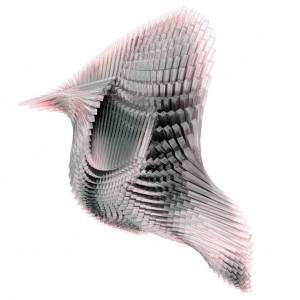(Bassil Taleb, Sequential Transformation)
D’Arcy Wentworth Thompson
”On the Theory of Transformations” (“On Growth and Form” , 1917)
D’Arcy Wentworth Thompson wrote his book in the beginning of XX century, in 1917. He was one of the first scientists that explored the connection, and tried to blur the boundaries between biology and mathematics. Large part of “On Growth and Form” is devoted to transformations of biological shapes and forms viewed as mathematical and physical methods. This chapter is highlighting mathematical descriptions of how physical processes affect biological changes.
Thompson uses grid systems and presents us his theory of coordinates. This theory expresses that transforming the grid we can see a mathematical logic in the evolution and biological growth. Thompson gave a lot of examples of forms represented nature: bones, leaves, skulls and so on, and explanations of changing shapes of one species according mathematical system of coordinate. Some images he used was taken from the artist and mathematician Albrecht Dürer’s work on proportion: “De Symmetria Partium in Rectus Femoris Humanorum Corporum Libri”. D’Arcy Wentworth Thompson uses four basic types of deformation of the Cartesian grid of coordinates to learn the development of the biological shapes:

